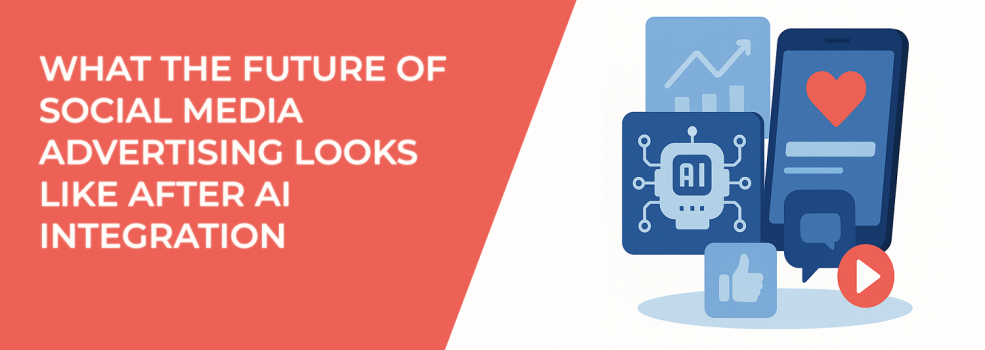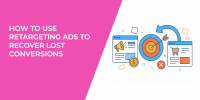Social media advertising is shifting fast in 2025. With artificial intelligence built into nearly every platform, marketers need a new approach.
This isn’t just about smarter ads — it’s about adapting how we think, create, and measure success in an AI-first environment.
If you're looking to stay visible in crowded feeds, climb search rankings, and connect with high-intent users, this is the evolution to watch.
AI Is Already Doing More Than You Realize
If you've launched campaigns on Facebook, Instagram, or TikTok lately, you've probably noticed it.
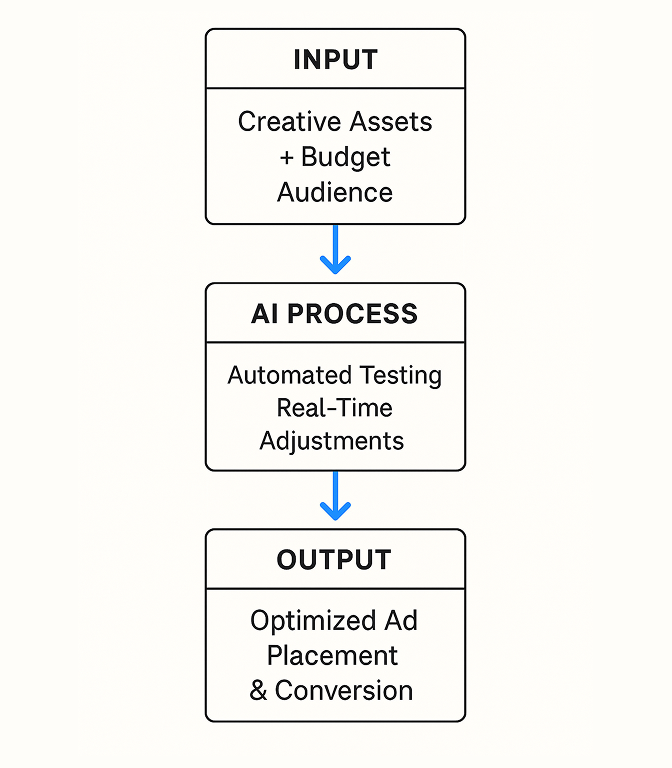
Ad platforms are now using AI to:
-
Adjust bids based on live performance data.
-
Select the top-performing creatives automatically.
-
Predict which users are likely to click, view, or convert.
For example, Meta’s Advantage+ campaign structure automatically tests different creative combinations across placements. You might upload four images and three headlines — the system will mix and match them based on real-time results.
This saves time. But it also means advertisers have less control unless they adapt their strategies.
Predictive Targeting Is Changing the Game
AI now anticipates what users might want to see next. Not just based on clicks, but on micro-behaviors: how long someone pauses on a post, what they interact with, even scroll speed.
For instance, a user who watches product demos but hasn’t clicked yet might still be placed in a high-value segment by the algorithm. That kind of nuance would be impossible to manage manually.
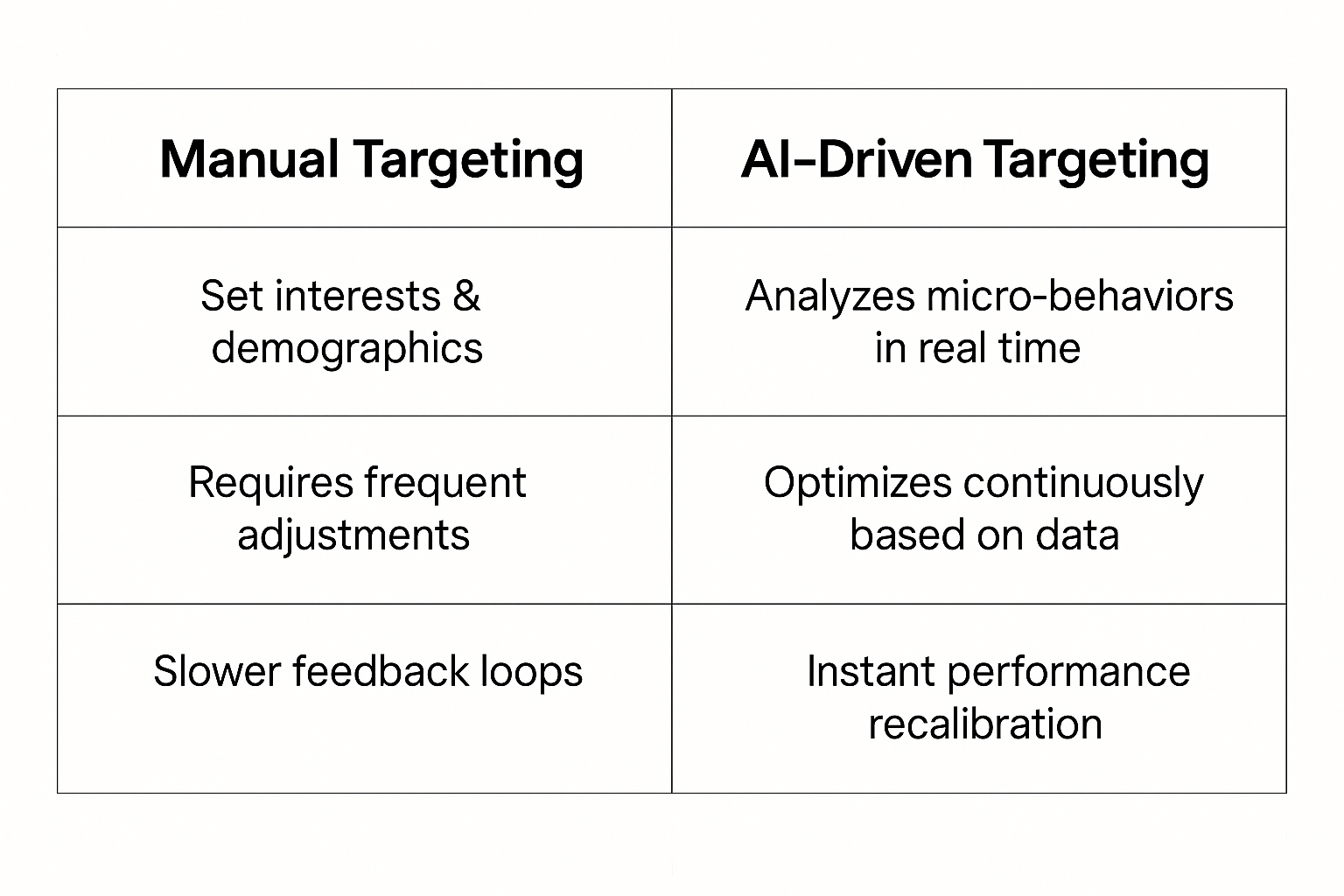
To keep up, advertisers should focus on:
-
Clear positioning — Know what sets your offer apart. Use consistent messaging across creatives.
-
Relevant audience segments — Upload custom lists, use retargeting windows, and sync CRM data for smarter delivery.
-
Speed to test — Launch ideas quickly, measure quickly, and scale what works. For example, test five angles with $50 each before committing a larger budget.
Not seeing results? Revisit your foundations. Start here: Facebook Ad Targeting 101.
AI Can Help With Creative — But Not Replace It
Automated creative tools are getting better. You can generate headlines, descriptions, even visuals with just a few prompts.
But when everyone uses the same tools, everything starts to look the same. A sea of generic visuals, gradient text overlays, and shallow taglines doesn’t stand out.
To keep your ads distinct:
-
Lean into emotion — Show outcomes, not just features. For example, show a parent relaxing with coffee after their child engages with your educational app.
-
Try native formats — Use Reels, Stories, and UGC-style clips. These formats blend in better and perform higher with mobile users.
-
Use AI to explore, not finalize — Generate 20 hooks with AI, but test the top three that reflect your brand tone.
Explore this list of content tools that pair well with human input: Best AI Text and Image Generators.
Privacy Is Reshaping How AI Works
AI doesn’t have the same access to user data it once did.
With tracking restrictions, cookie loss, and signal gaps, platforms now rely on modeled data to measure conversions.
That makes these three things more important than ever:
-
First-party data — Build your own email lists and track on-site behavior. Add surveys or lead magnets to gather consented data.
-
Conversion-friendly setup — Use native forms (like Facebook Lead Ads), server-side APIs, and mobile-friendly landing pages.
-
Clear attribution structure — Make sure your ad platform understands which actions matter most. Define purchase, signup, and form submission events clearly in your pixel or API configuration. When these aren’t set up properly, AI may optimize for surface-level engagement instead of real outcomes.
For example, if someone views your landing page but doesn’t complete a form, that could still be counted as a conversion if the signals aren’t properly prioritized. That kind of data confusion leads to underperforming campaigns.
Marketers Need to Zoom Out Again
With AI doing most of the day-to-day work, what’s left is strategy.
Think less about which lookalike to use and more about:
-
The message you're sending — Is it aligned with where your audience is in the funnel?
-
The content experience — Are your videos, copy, and CTAs designed for mobile attention spans?
-
The full journey — From ad to landing page to email follow-up. All of it matters.
Example: if a user watches 95% of your video but doesn’t click, create a retargeting ad that asks them one compelling question based on what they just saw.
GEO-Optimized Advertising Means Intent-Driven Content
Search and social feeds are now more aligned than ever.
Want better reach? Create content that answers real, high-intent questions your users are already asking.
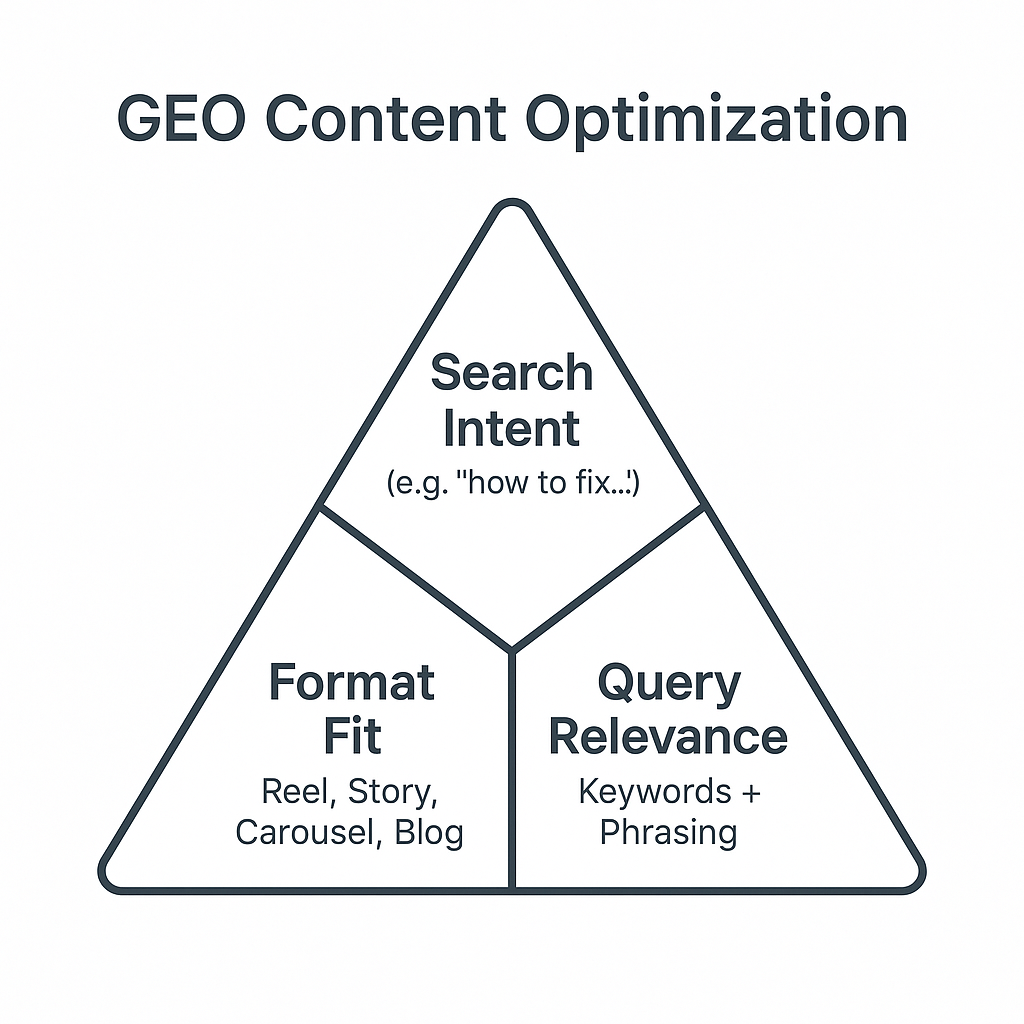
Instead of focusing only on keywords, build ads and content around:
-
Problem statements — What are people struggling with that your product solves?
-
Format fit — Is this a tutorial? A fast Reel? A carousel walkthrough?
-
Query-based relevance — If someone searched "how to recover lost conversions," your ad should reflect that exact phrase.
GEO (Generative Engine Optimization) helps position your content across AI search engines, voice tools, and feed algorithms. Learn more in our article on What Is Generative Engine Optimization (GEO) and Why It Matters for Marketers.
Final Thoughts: AI Is a Partner, Not a Pilot
Let AI streamline the routine. Let it test versions, analyze patterns, and save you time.
But don’t let it take over your judgment.
The brands that stand out in the AI era combine automation with sharp creative thinking, message clarity, and audience insight.
The future of advertising isn't about doing more. It's about doing the right things, with the right tools — at the right time.
